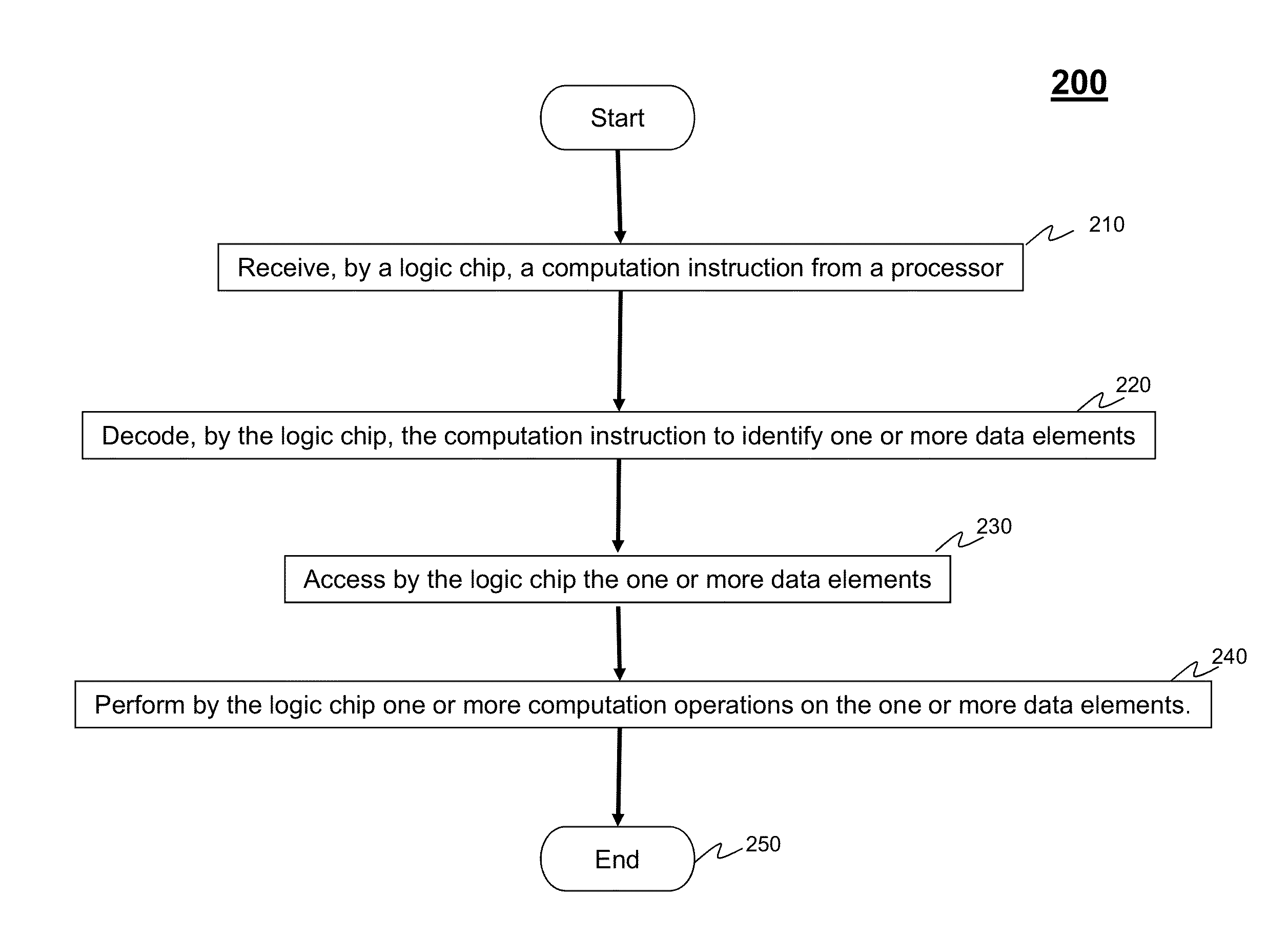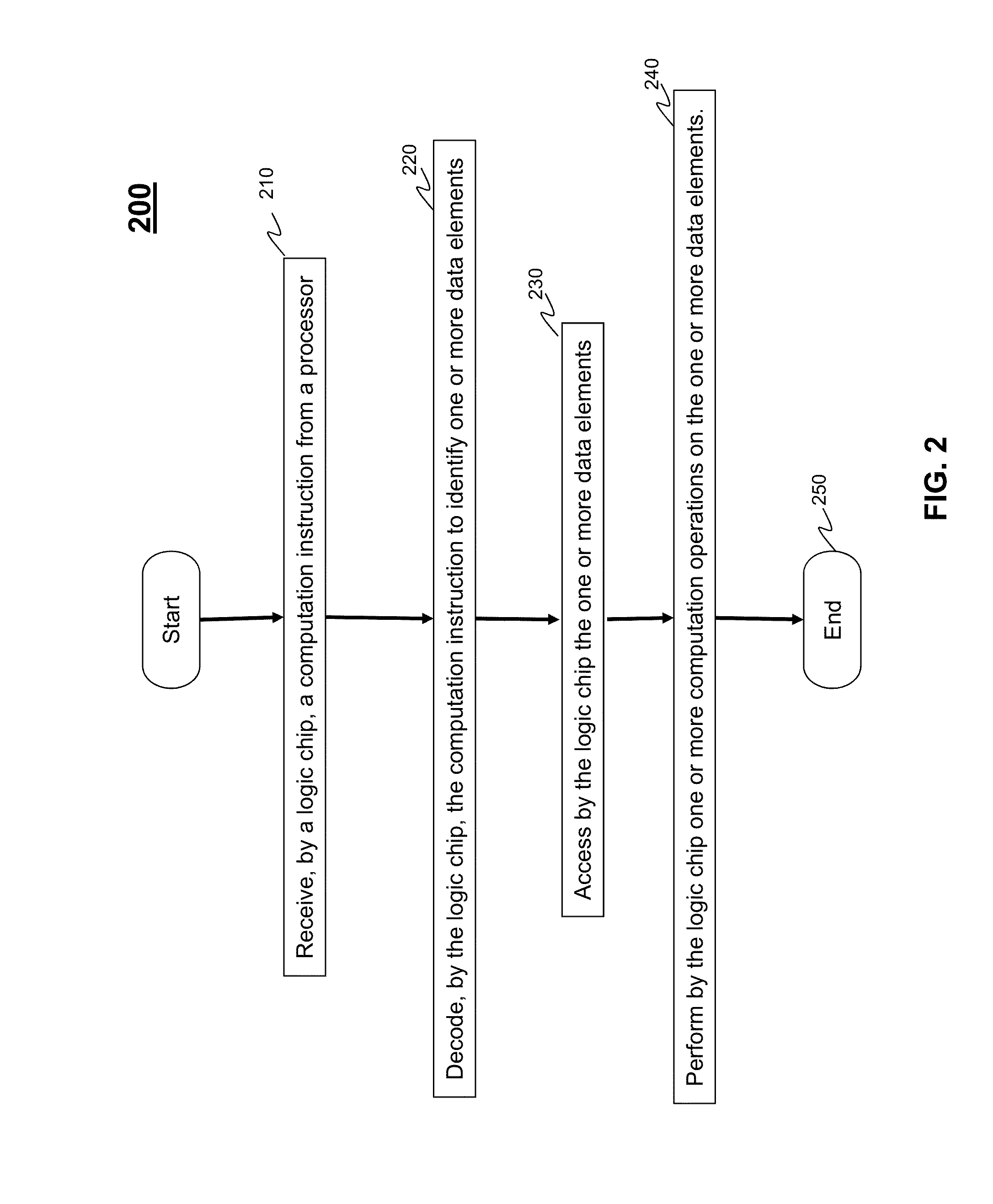Computation Memory Operations in a Logic Layer of a Stacked Memory
a logic layer and memory technology, applied in the field of computer systems, can solve the problems of limiting the opportunity to optimize memory accesses and data transfers, consuming power for the transmission of memory addresses and associated commands, and introducing performance overheads, so as to achieve the effect of increasing performance and/or power efficiency
- Summary
- Abstract
- Description
- Claims
- Application Information
AI Technical Summary
Benefits of technology
Problems solved by technology
Method used
Image
Examples
Embodiment Construction
[0008]Therefore, what is needed are memory systems using multiple silicon chips within a single package, for example a memory chip three-dimensionally integrated with a logic / interface chip. The additional logic chip provides opportunities to integrate additional functionality not normally provided by memory systems. The functionality of this logic chip could be implemented on a silicon interposer on which the memory chips as well as other processing chips are stacked.
[0009]Embodiments use the logic functions to implement additional functionality to perform data computations associated with data in the associated memory chips. For instance, a reduction operation that computes the maximum value in an array can be performed in the logic associated with a memory stack to read the memory elements associated with an array, compute the maximum value, and return only this maximum value to the host processor.
[0010]Embodiments use die-stacked memories that contain a logic layer in addition t...
PUM
 Login to View More
Login to View More Abstract
Description
Claims
Application Information
 Login to View More
Login to View More - R&D
- Intellectual Property
- Life Sciences
- Materials
- Tech Scout
- Unparalleled Data Quality
- Higher Quality Content
- 60% Fewer Hallucinations
Browse by: Latest US Patents, China's latest patents, Technical Efficacy Thesaurus, Application Domain, Technology Topic, Popular Technical Reports.
© 2025 PatSnap. All rights reserved.Legal|Privacy policy|Modern Slavery Act Transparency Statement|Sitemap|About US| Contact US: help@patsnap.com



